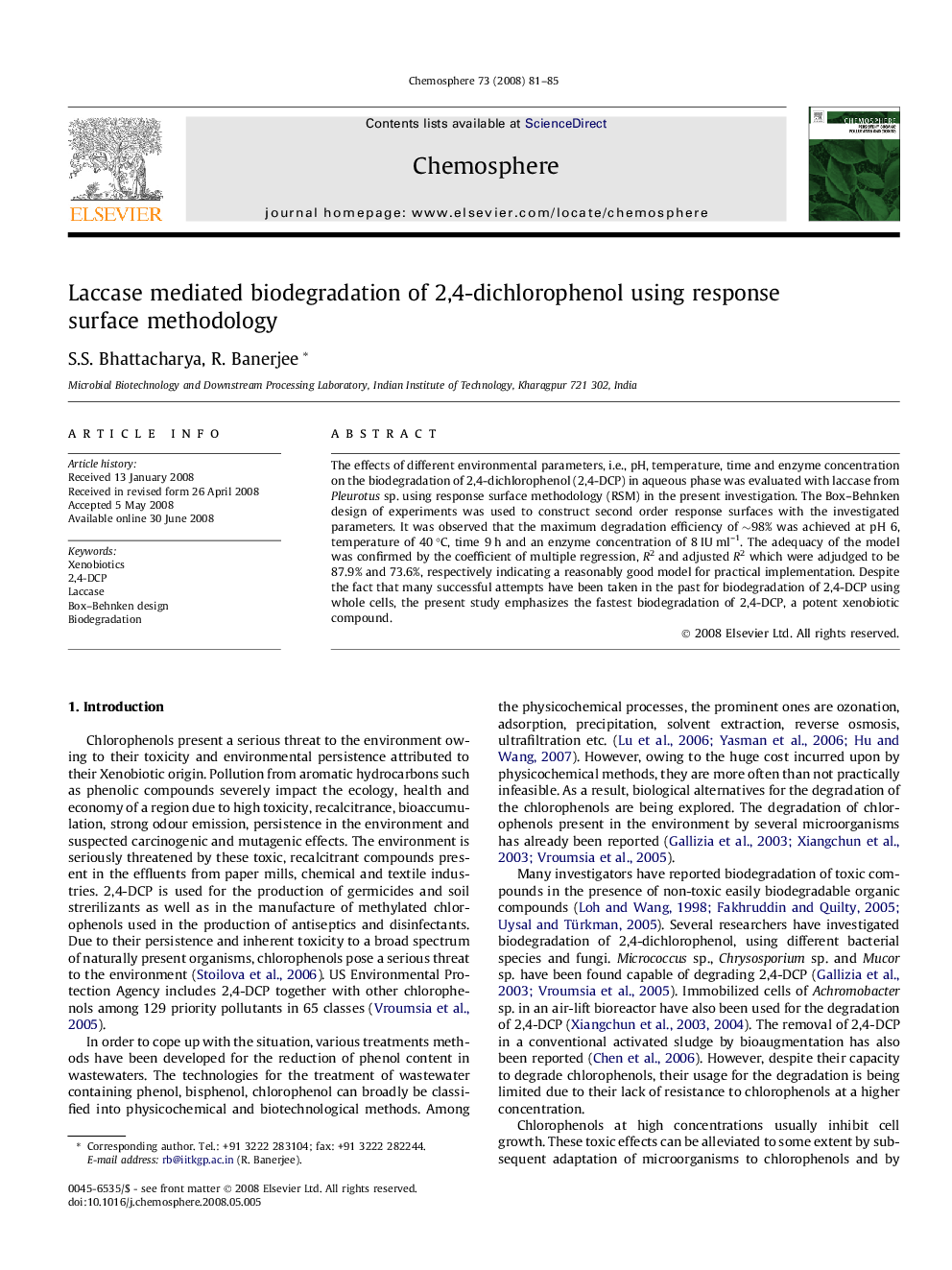| Article ID | Journal | Published Year | Pages | File Type |
|---|---|---|---|---|
| 4413733 | Chemosphere | 2008 | 5 Pages |
The effects of different environmental parameters, i.e., pH, temperature, time and enzyme concentration on the biodegradation of 2,4-dichlorophenol (2,4-DCP) in aqueous phase was evaluated with laccase from Pleurotus sp. using response surface methodology (RSM) in the present investigation. The Box–Behnken design of experiments was used to construct second order response surfaces with the investigated parameters. It was observed that the maximum degradation efficiency of ∼98% was achieved at pH 6, temperature of 40 °C, time 9 h and an enzyme concentration of 8 IU ml–1. The adequacy of the model was confirmed by the coefficient of multiple regression, R2 and adjusted R2 which were adjudged to be 87.9% and 73.6%, respectively indicating a reasonably good model for practical implementation. Despite the fact that many successful attempts have been taken in the past for biodegradation of 2,4-DCP using whole cells, the present study emphasizes the fastest biodegradation of 2,4-DCP, a potent xenobiotic compound.
